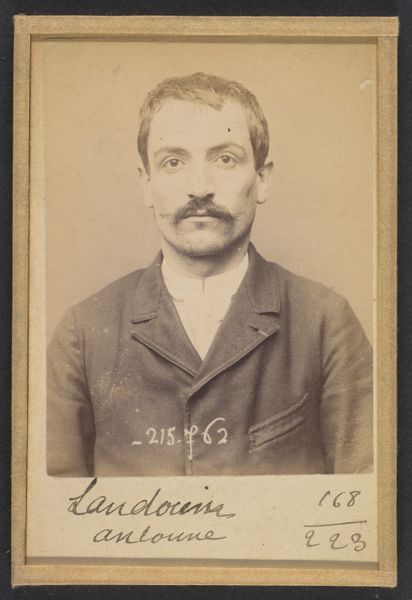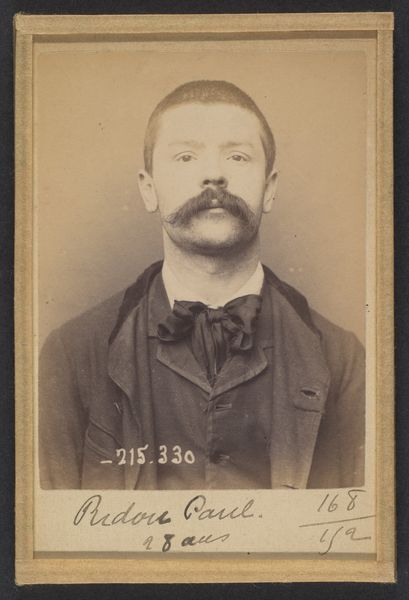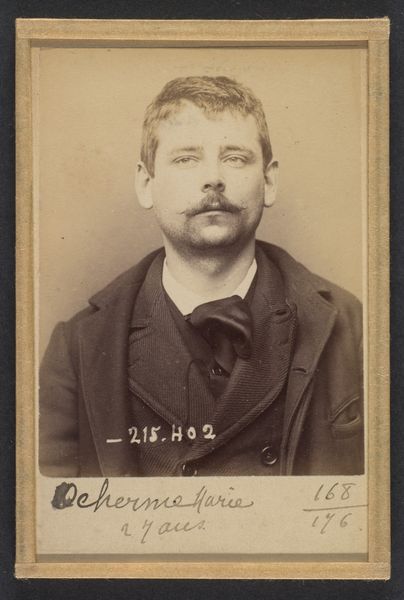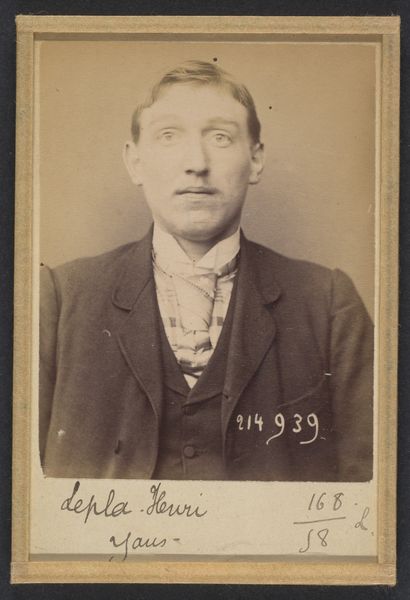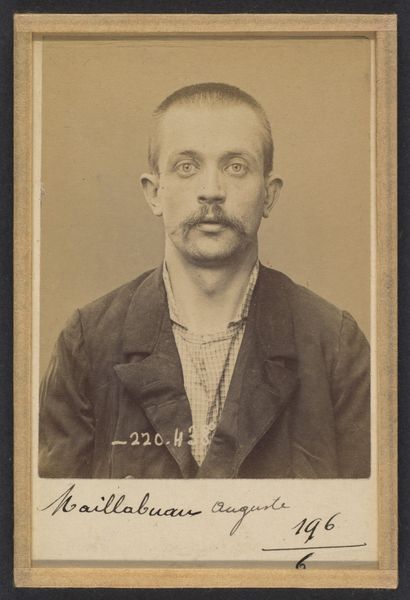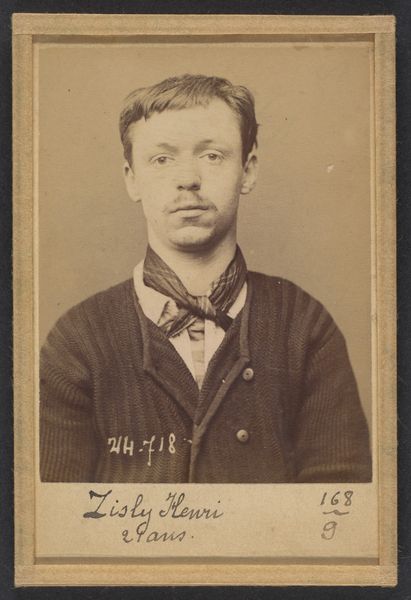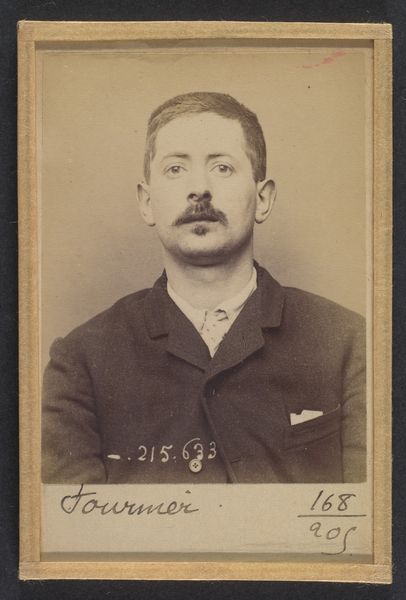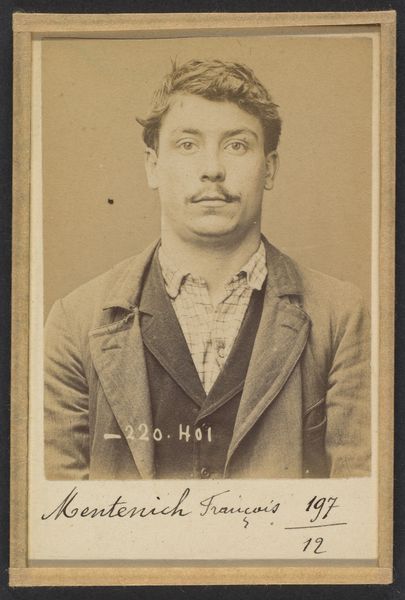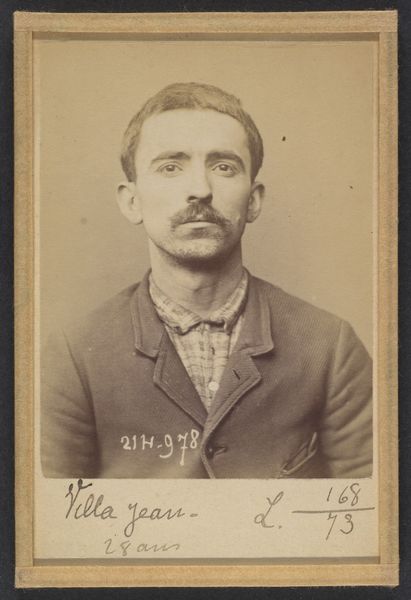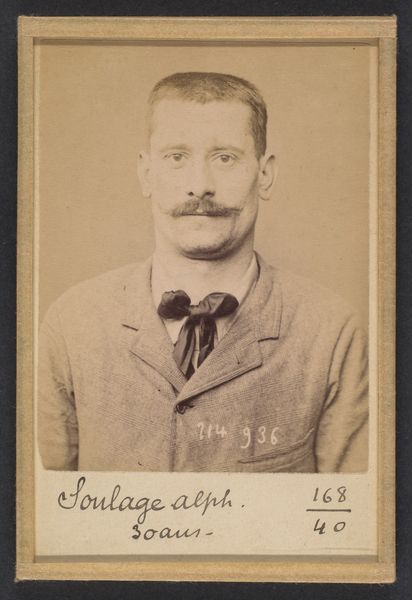
Brosselin. Jean-Baptiste. 32 ans, né le 10/1/62 à Aulay (Côte d'Or). Menuisier. Anarchiste. 2/7/94. 1894
0:00
0:00
print, photography
#
portrait
#
portrait
# print
#
photography
Dimensions: 10.5 x 7 x 0.5 cm (4 1/8 x 2 3/4 x 3/16 in.) each
Copyright: Public Domain
Curator: Let’s discuss this rather unsettling photographic portrait titled "Brosselin. Jean-Baptiste. 32 ans, né le 10/1/62 à Aulay (Côte d'Or). Menuisier. Anarchiste. 2/7/94.” It dates back to 1894. Editor: My immediate impression is that there's something inherently melancholic about this man, even with the somewhat debonair mustache. The sepia tones deepen the feeling of the passage of time. Curator: Precisely. This piece, taken by Alphonse Bertillon, offers a chilling snapshot into the criminal justice system of late 19th-century France, with deep roots in social anxieties and political upheaval. Jean-Baptiste Brosselin, identified as an anarchist and a carpenter, likely faced dire circumstances. Editor: The symbolism of a mugshot is itself potent. We're meant to read it as an identifier, a marker of deviancy. Look how his gaze drifts off to the side – perhaps conveying unease, fear, or maybe even defiance? What does "anarchist" signify here beyond the simple definition? Curator: Considering that anarchism represented a threat to established social orders, especially after events like the 1894 bombing of the French Chamber of Deputies, labeling Brosselin as such cemented a powerful social and political image: that of an enemy of the state. Editor: You know, his clothes belie the label. He wears a patterned tie and what appears to be a tweed jacket. One wonders if his social standing contributed to the justice system's prejudice. What did it mean to be an anarchist back then? A genuine call for restructuring society or something more dangerous, from the perspective of those in power? Curator: It's a complex intersection. Economic disparity, combined with growing anarchist sentiments in the working class, fuelled anxieties among the bourgeoisie. These photographic records often served to demonize marginalized groups. Brosselin's portrait freezes him in time, labelled not just with his name, but also with a very loaded ideology. Editor: These visual and cultural echoes continue to reverberate today, influencing our own biases and preconceived notions of class and political ideology. Thank you for opening up this photograph to a bigger, very interesting conversation! Curator: Absolutely. By understanding the nuances and implications behind this image, we are better prepared to interpret our world and its many struggles.
Comments
No comments
Be the first to comment and join the conversation on the ultimate creative platform.
